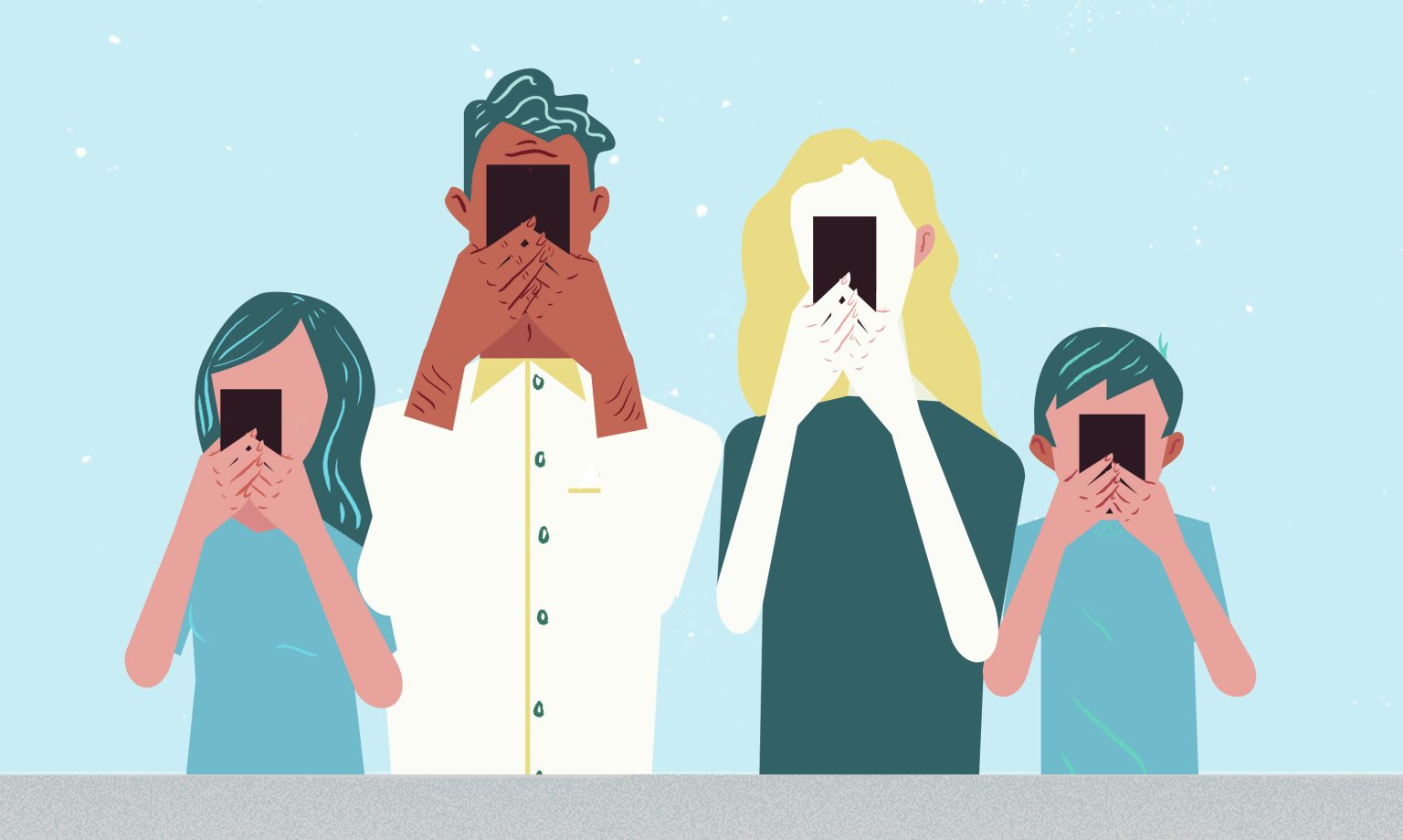By Faiyaz Chowdhury
In this hyper-connected modern world, most of us wake up to the glow of a screen, checking texts, scanning headlines or mindlessly scrolling through social media before our feet can even hit the floor. From work to leisure, education to entertainment, digital screens have become an inseparable part of our daily lives and Bangladesh is no exception there.
But just how much screen time is healthy? And what happens when we cross that threshold?
According to the Digital 2024 Global Overview Report, the average internet user now spends around 6 hours and 40 minutes per day on screens. In urban centres like Dhaka, many students, office workers and freelancers easily exceed that. Dr. Faisal Quader Shah Chowdhury, Head of Ophthalmology at Mymensingh Medical College, expresses some serious concerns about the growing trend of prolonged screen exposure among both adults and children.
“Excessive screen time is slowly becoming a silent epidemic,” says the ophthalmologist. “It often goes unnoticed because it is socially normalised in this time, but its effects on our health, sleep and attention span are becoming more serious.”
He notes a surge in patients, especially teenagers and young adults, reporting headaches, insomnia, anxiety and irritability with excessive screen-time (mostly from mobile phones) being a common factor.
How much is too much?
Health guidelines vary across age groups. The World Health Organization (WHO) recommends:
- Children under 2: No screen time, except for video calls.
- Ages 2–5: Maximum of 1 hour per day.
- Ages 6 and above: No strict limit, but screen time should not interfere with sleep, physical activity or offline play.
For adults, there is no fixed limit, but experts recommend regular breaks and time away from screens to avoid long-term health issues.
The eye specialist suggests, “No one should be looking at a screen for more than 20 minutes at a stretch. After every 20 minutes, it is essential to take a short break and look away. Otherwise, you risk developing serious conditions like Computer Vision Syndrome, commonly known as ‘digital eye strain,’ and computer dry eye.”
He adds that these problems, once considered rare, are now increasingly common in his patients, particularly among students and officegoers who work long hours on computers or smartphones.
Screens themselves are not the enemy. It’s how and how long we use them that determines the impact. Here are some of the most common consequences of excessive screen time:
- Digital eye strain: Also known as Computer Vision Syndrome, symptoms include dry eyes, blurred vision, headaches, and neck pain.
- Sleep disruption: Blue light from screens interferes with melatonin, the hormone that regulates sleep, leading to insomnia or poor sleep quality.
- Mental health challenges: Research links heavy social media use to depression, anxiety and loneliness, particularly among teens and young adults.
- Reduced attention span: Constant notifications, short-form content and multitasking are training our brains to crave distraction.
- Physical inactivity: Sedentary screen time contributes to obesity, back pain, and cardiovascular risks.
The doctor informs, “Children especially are the most vulnerable.”
The impact on children goes beyond physical. In many urban households, smartphones and tablets have become digital babysitters. Experts warn that early exposure to screens can delay language development, reduce creativity and limit social interaction.
Dr. Faisal also stresses that it’s not just the amount of screen time, but what we do with it that makes the difference. “Watching educational videos or using digital tools creatively can be enriching. But passive scrolling, doom scrolling, or mindless gaming for hours has far more negative consequences,” he warns.
For example, a university student attending online classes for 4 hours may not suffer the same effects as someone spending that time jumping between TikTok and Instagram.
What can be done?
Rather than pushing for screen abstinence- which is nearly impossible in modern life, doctors recommend digital hygiene and mindful use. Here are some practical tips:
- Follow the 20-20-20 rule: Every 20 minutes, take a 20-second break and look at something 20 feet away. This rule helps prevent dry eyes and reduces eye strain.
- Set screen-free zones: Keep devices out of bedrooms, dining areas, and study rooms.
- Turn off notifications: Reduce digital noise to avoid constant distractions.
- Use screen time trackers: Apps like Digital Wellbeing (Android) or Screen Time (iOS) help monitor daily use.
- Avoid screens before bed: At least one hour before sleep, avoid phones and laptops.
In a society increasingly dependent on digital devices, curbing screen time requires a collective change in attitude.
According to the doctor, we’ve normalised being constantly online. It’s time we take breaks, set the boundaries and reconnect with the offline world.


